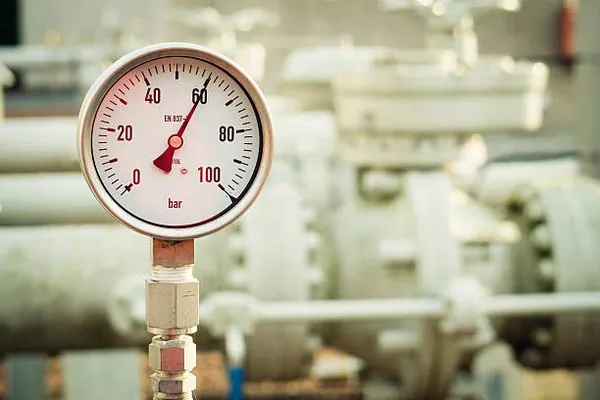A well pressure gauge is an essential instrument used to monitor and maintain the pressure within a well system. It ensures optimal performance, prevents system failures, and helps troubleshoot potential issues before they become critical. Understanding how a well pressure gauge works is crucial for homeowners, engineers, and technicians who deal with water well systems. This article explores the working principles of a well pressure gauge, its components, functions, and applications.
Understanding Well Pressure Gauges
A well pressure gauge measures the pressure of water inside a well system, typically in pounds per square inch (psi). This information helps users determine whether the system is functioning properly and whether any adjustments are needed to maintain water pressure at an optimal level.
Importance of Monitoring Well Pressure
Maintaining the correct water pressure in a well system is critical for several reasons:
Prevents Pump Damage: High or low pressure can indicate issues with the pump, leading to costly repairs.
Ensures Consistent Water Supply: A stable pressure ensures that water reaches all faucets and appliances efficiently.
Detects Leaks: A sudden drop in pressure may indicate a leak in the system.
Improves System Longevity: Keeping pressure within the recommended range helps extend the lifespan of the well pump, pressure tank, and piping.
Components of a Well Pressure Gauge
A well pressure gauge consists of several key components that work together to measure pressure effectively:
1. Dial Face
- Displays the pressure reading, typically in psi.
- Marked with numerical increments for easy reading.
2. Needle Indicator
- Moves according to the pressure inside the system.
- Provides a real-time measurement.
3. Bourdon Tube Mechanism
- The core component that detects pressure changes.
- Expands or contracts depending on the pressure applied, causing the needle to move.
4. Connection Port
- Attaches the gauge to the water system.
- Typically made of brass or stainless steel to prevent corrosion.
5. Case and Protective Cover
- Protects internal components from environmental damage.
- Some gauges are liquid-filled to reduce vibration and improve longevity.
Working Principle of a Well Pressure Gauge
The operation of a well pressure gauge is based on the Bourdon tube principle, which relies on the mechanical deformation of a curved tube under pressure. Here’s how it works step by step:
1. Water Pressure Enters the Gauge
- The gauge is connected to the well system via a threaded fitting, allowing water to flow into the device.
2. Bourdon Tube Expands or Contracts
- The Bourdon tube inside the gauge deforms as the internal pressure changes.
- Higher pressure causes the tube to expand outward, while lower pressure allows it to contract.
3. Needle Movement Translates Pressure Reading
- The tube is connected to a mechanical linkage system that translates its movement into rotational motion.
- This motion moves the needle on the dial face, displaying the pressure reading.
4. User Reads the Displayed Pressure
- The user observes the needle’s position on the scale to determine the system pressure.
- The reading helps in making necessary adjustments to maintain the desired pressure.
Types of Well Pressure Gauges
There are different types of well pressure gauges, each suited for specific applications:
1. Dry Pressure Gauges
- The most common type, used in residential and light commercial well systems.
- Simple and cost-effective but susceptible to vibration and wear.
2. Liquid-Filled Pressure Gauges
- Filled with glycerin or silicone to dampen needle movement.
- Suitable for high-vibration environments and harsh conditions.
3. Digital Pressure Gauges
- Uses electronic sensors to display pressure digitally.
- Provides higher accuracy and additional features like data logging.
4. Differential Pressure Gauges
- Measures the difference between two pressure points in the system.
- Useful in complex setups where monitoring pressure variations is critical.
Installation and Maintenance
Installing a Well Pressure Gauge
Proper installation ensures accurate readings and long service life. Follow these steps:
Turn Off Power to the Well Pump: Prevents accidental water flow and ensures safety.
Choose the Right Location: Typically installed near the pressure switch or pressure tank.
Apply Teflon Tape to Threads: Ensures a watertight seal to prevent leaks.
Thread the Gauge into Place: Hand-tighten first, then use a wrench for a secure fit.
Turn the Pump Back On and Test: Check for leaks and ensure the gauge functions properly.
Maintaining a Well Pressure Gauge
Regular maintenance helps extend the life of the gauge and keeps the well system running smoothly:
Check for Leaks: Inspect the connection points for water leaks.
Clean the Gauge Face: Keep the dial readable by wiping away dirt and debris.
Monitor for Accuracy: Compare readings with a secondary gauge if possible.
Replace If Necessary: If the needle sticks or readings become inconsistent, replace the gauge.
Troubleshooting Common Issues
1. Inaccurate Readings
Possible Causes: Clogged gauge, worn-out components, or an airlock.
Solution: Clean or replace the gauge if necessary.
2. Gauge Not Moving
Possible Causes: Broken Bourdon tube, stuck needle, or blocked inlet.
Solution: Replace the gauge if it fails to respond to pressure changes.
3. Fluctuating Pressure Readings
Possible Causes: Water hammer effects, faulty pressure tank, or pump cycling issues.
Solution: Check the pressure tank and pump for irregularities.
Conclusion
A well pressure gauge is a vital component in a well system, helping to maintain stable water pressure and prevent potential failures. By understanding how it works, the different types available, and proper maintenance practices, homeowners and professionals can ensure the efficiency and longevity of their well system. Regular monitoring and timely troubleshooting can help prevent costly repairs and maintain a consistent water supply.
By following proper installation, maintenance, and troubleshooting guidelines, you can make the most of your well pressure gauge and ensure that your well system operates smoothly for years to come.

